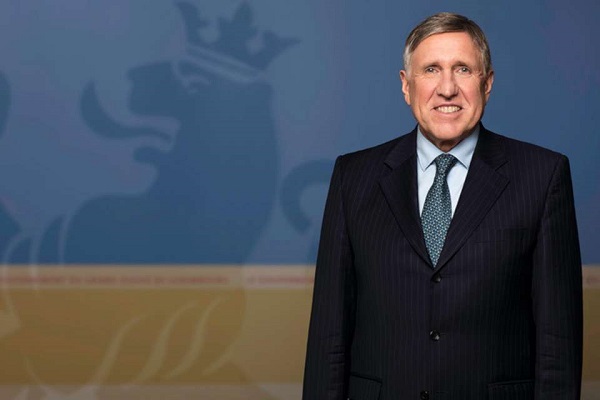 François Bausch, Luxembourg's Deputy Prime Minister and Minister of Defence;
Credit: SIP
François Bausch, Luxembourg's Deputy Prime Minister and Minister of Defence;
Credit: SIP
On Friday 3 December 2021, Luxembourg's Deputy Prime Minister and Minister of Defence, François Bausch, presented the first ever assessment of greenhouse gas emissions caused by Luxembourgish defence activity.
In 2019, the Luxembourg Defence (defence and army department) emitted 19,330 tonnes of greenhouse gases, which represented around 1.5% of the country's total emissions.
In his presentation to members of the committee for internal security and defence of the Chamber of Deputies (Parliament), the Deputy Prime Minister detailed the evolution of greenhouse gas emissions between 2017 and 2020 and placed particular emphasis on the five most important sources of emissions in terms of volume, namely emissions from the production of goods and services purchased by the Luxembourg Defence, military aviation, heating of buildings, motor vehicles and emissions from the manufacture and launch of the GovSat-1 satellite in 2018.
Minister Bausch also outlined the avenues implemented to reduce the carbon footprint of the Luxembourg Defence. In terms of infrastructure, in the long term, the renovation of the Herrenberg barracks with the best available technologies in terms of insulation and energy efficiency is expected to help considerably reduce emissions linked to the heating of buildings. Despite a 25% increase in the area of military installations, emissions are expected to decrease by 78%. An increase in the share of renewable energies and the production of electrical energy by the Luxembourg Army is also expected to allow emissions linked to the purchase of electrical energy to be halved.
The Deputy Prime Minister noted, however, that a reduction in direct greenhouse gas emissions from the operation of vehicles and aeroplanes is not possible in the short term since there are currently no carbon neutral vehicles and military aircraft on the market.
Nevertheless, the Luxembourg Defence has implemented several measures to reduce indirect emissions. These include in particular joint procuring and pooling and sharing capabilities with other allies. Through these mechanisms, less gear will have to be produced, which has an impact on indirect emissions. Examples include the Belgian-Luxembourg bi-national fleet of A400M aircraft, the European Air Transport Command (EATC) and the Multi-Role Tanker Transport (MRTT).
The Luxembourg Defence has also made a commitment to gradually electrify its fleet of civilian vehicles, which already comprises 21% of plug-in hybrid vehicles and 21% of electric vehicles. It will integrate energy efficiency criteria into future vehicle acquisition processes. Moreover, the Luxembourg Defence undertook to invest more in research and development (R&D) and technological innovation to help develop carbon-neutral fuels and propulsion systems.
Finally, the Deputy Prime Minister outlined the Luxembourg Defence's plans to offset emissions that cannot be reduced at this stage, through the acquisition of emission certificates generated within the framework of international greenhouse gas sequestration projects. For this purpose, €400,000 have already been reserved in the defence budget for the 2022 financial year.
“This study shows that, despite the current impossibility of reducing direct emissions from military vehicles and aircraft, Defense still has great potential to reduce its carbon footprint", stated Minister Bausch. “I am determined to use all the means in my possession so that our army becomes a greener army while increasing its operability".









